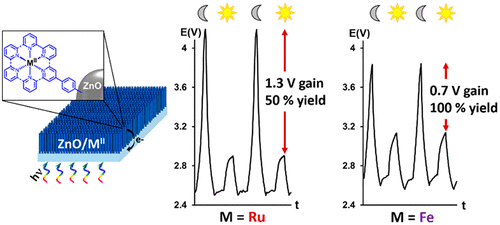ZnO Nanowires as a Promotor of High Photoinduced Efficiency and Voltage Gain for Cathode Battery Recharging
Lauréline Lecarme, Vincent Consonni, Frédéric Lafolet, Thomas Cossuet, Michel Mermoux, Frédéric Sauvage, Ali Nourdine, Fannie Alloin, and Jean-Claude Leprêtre



